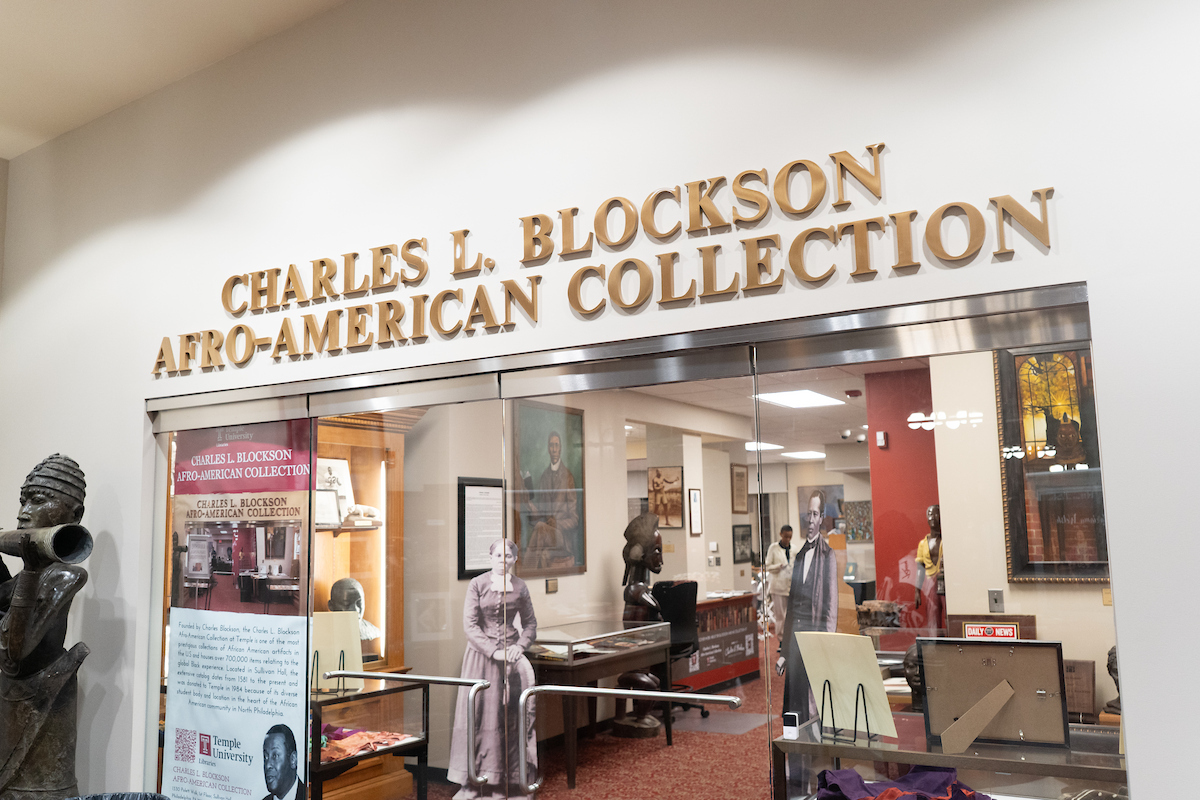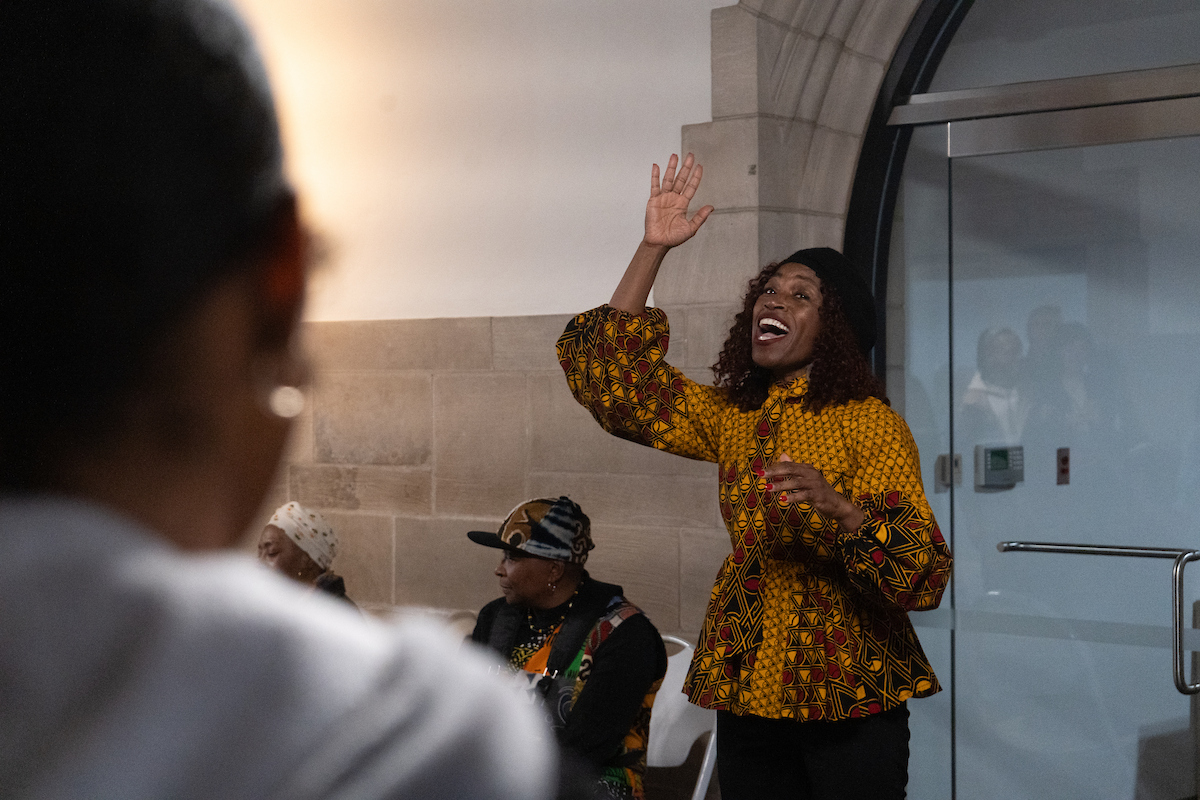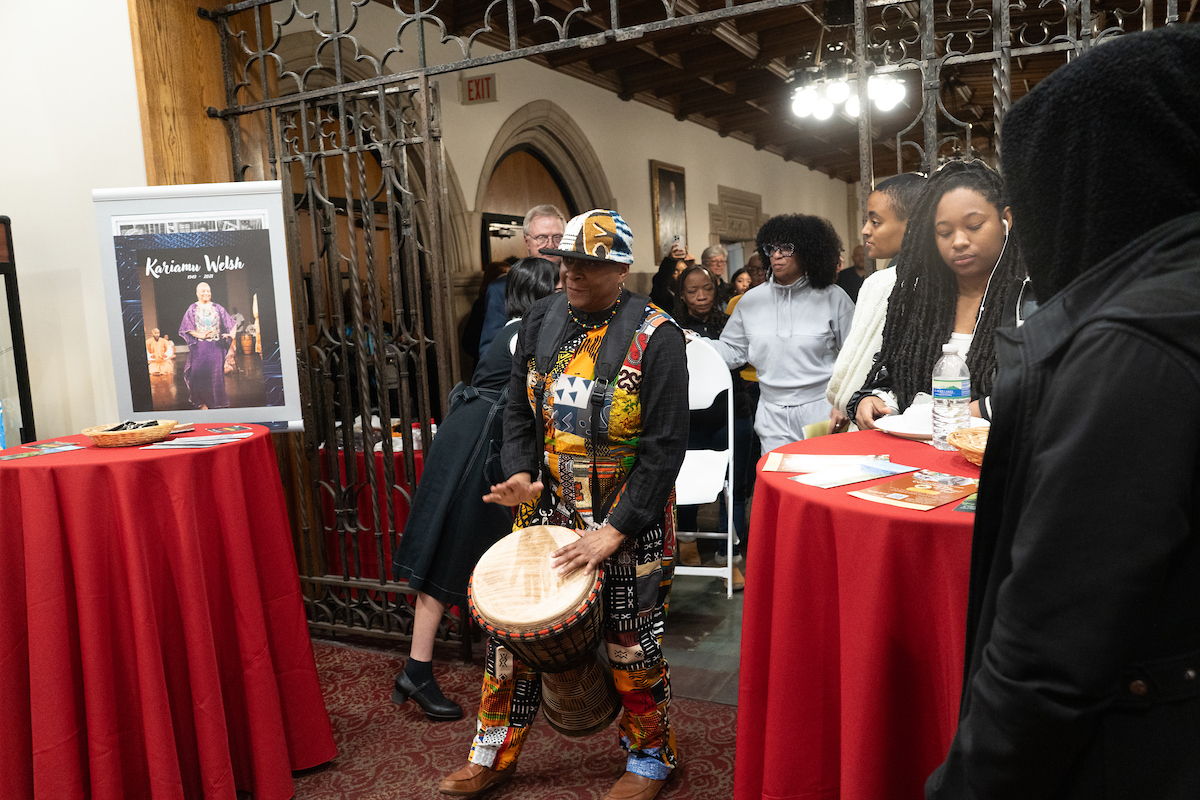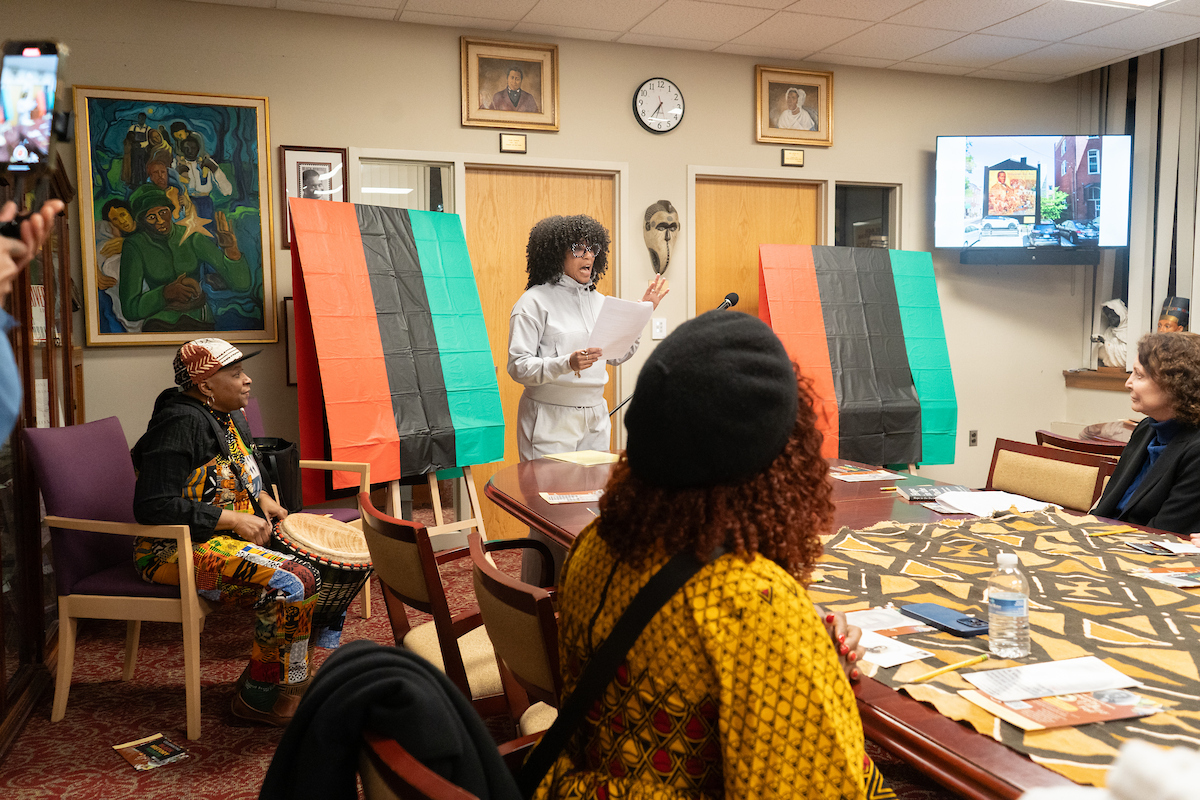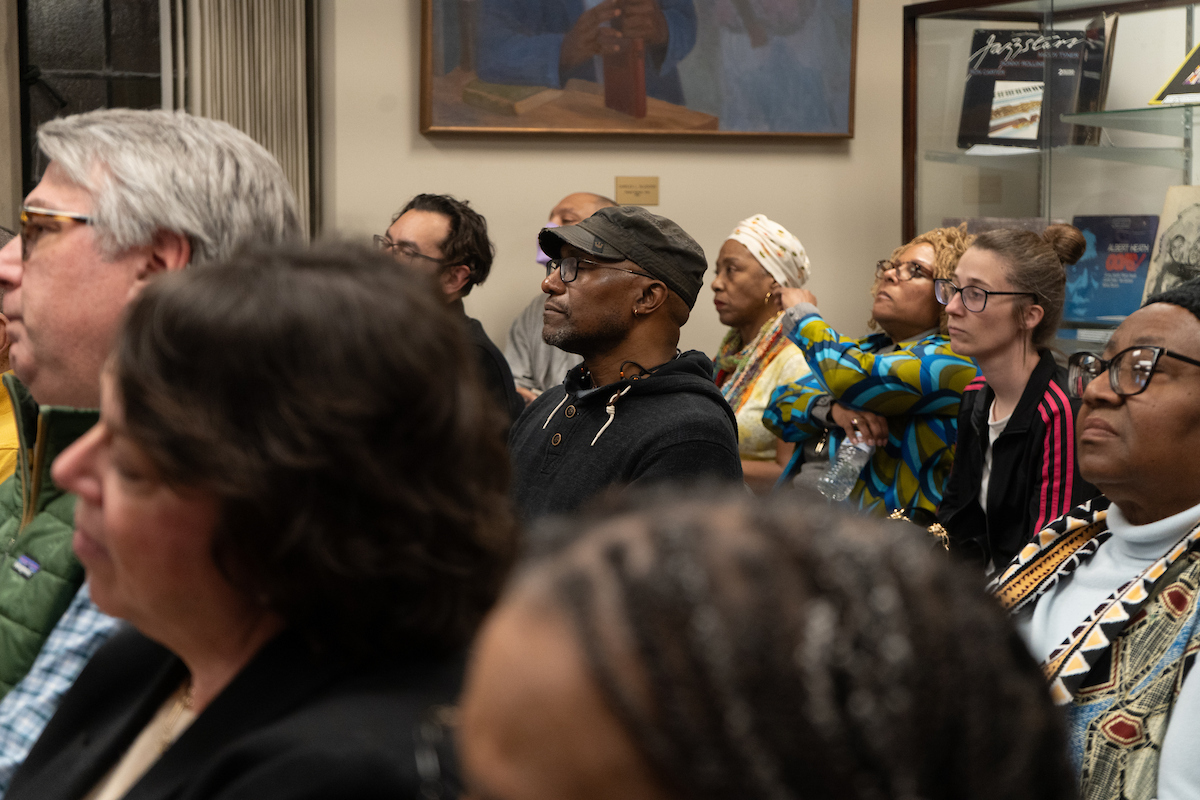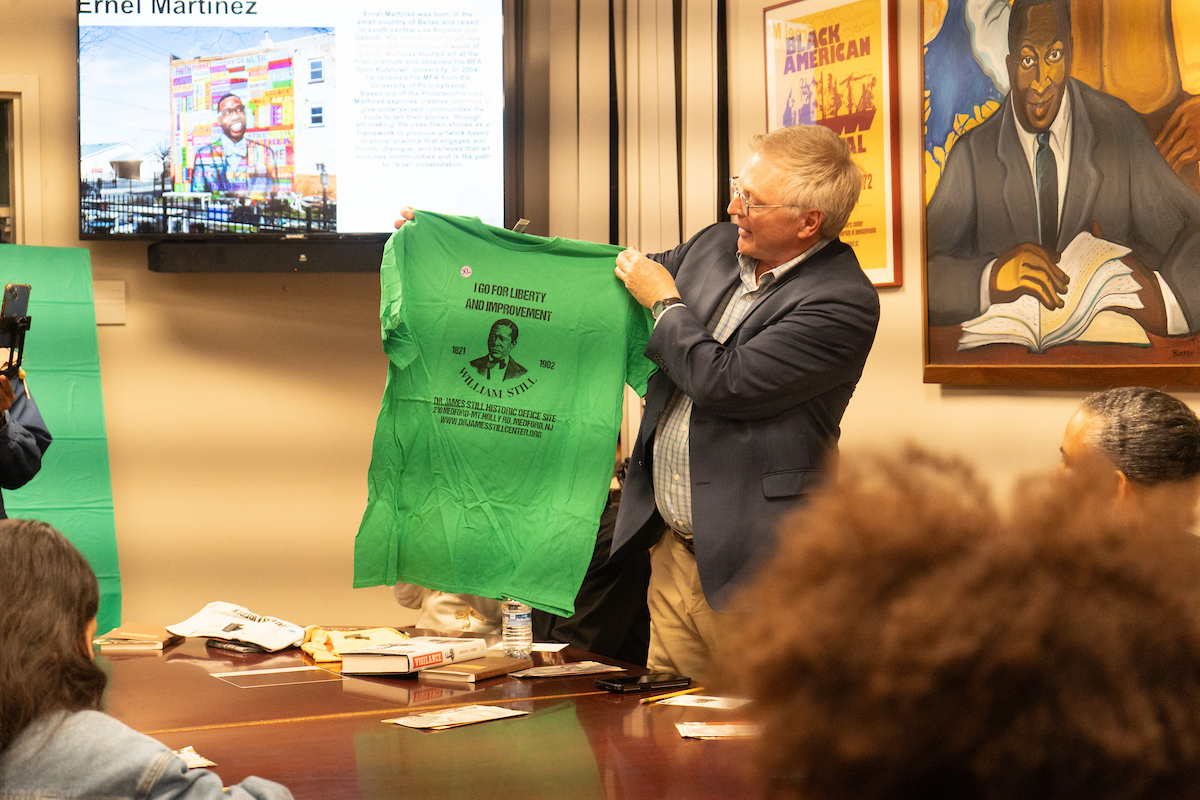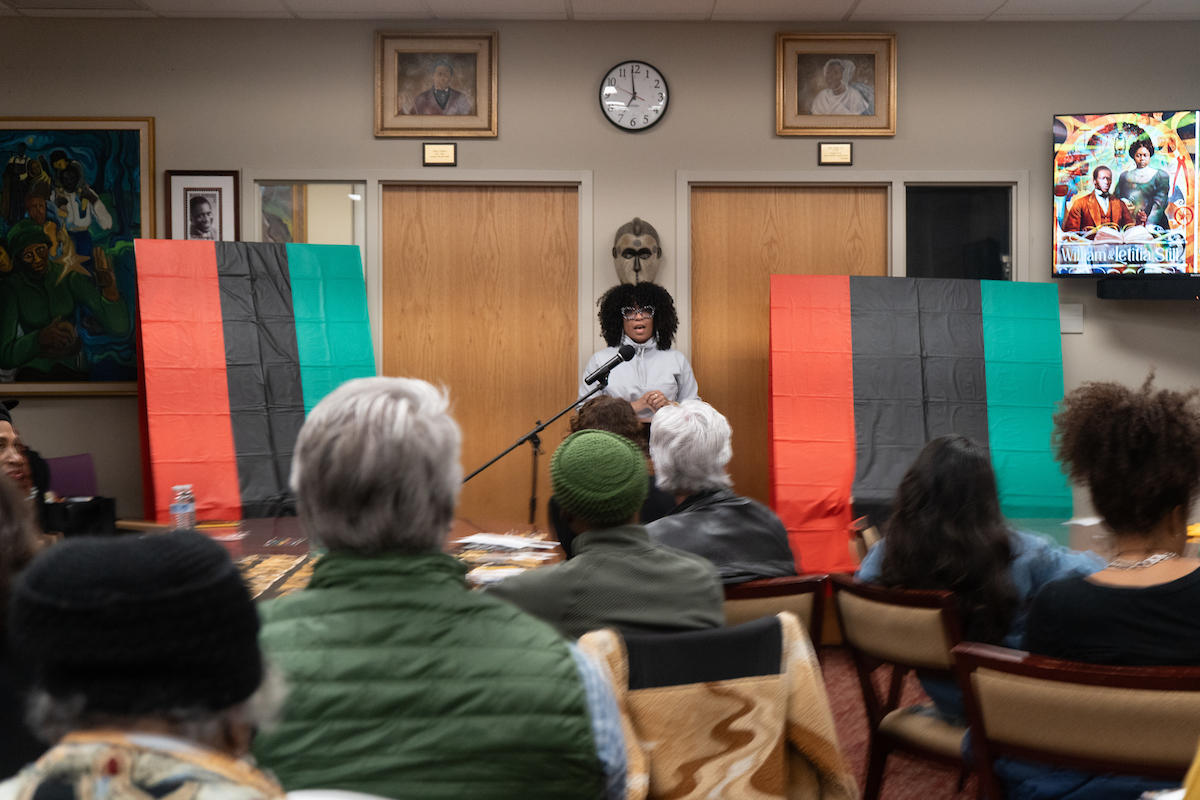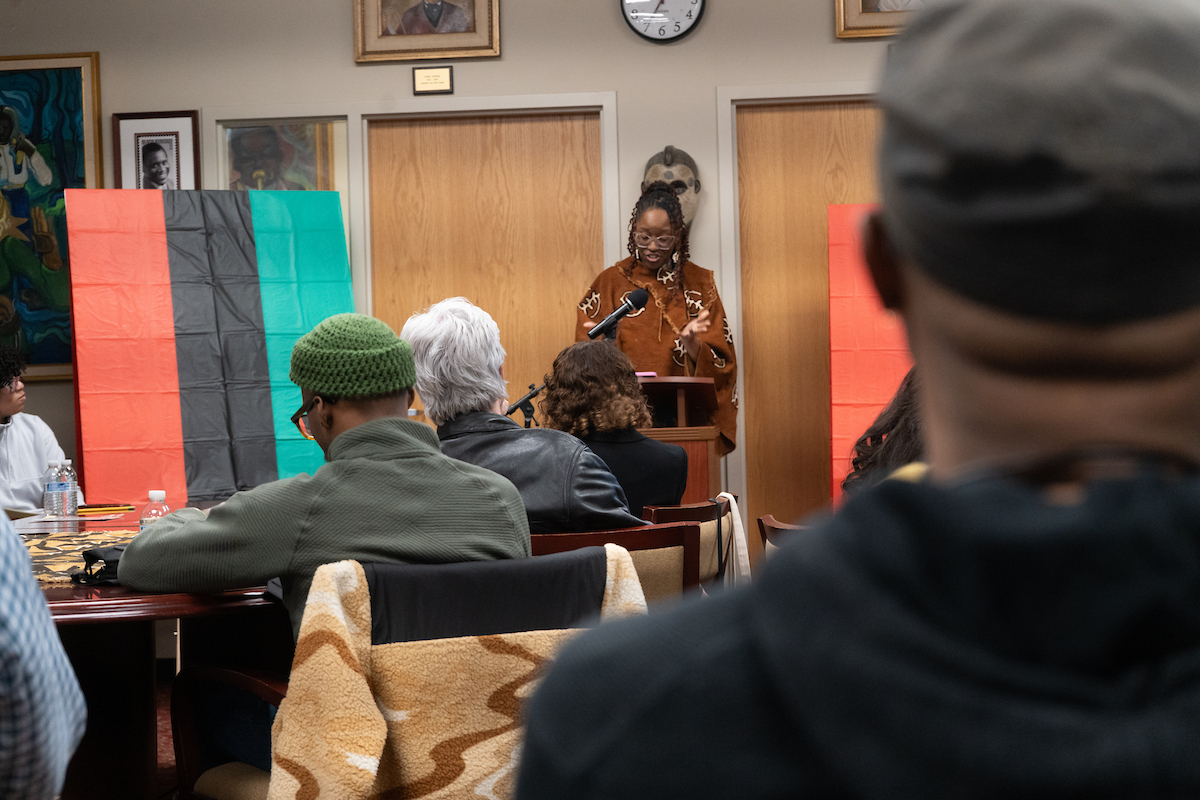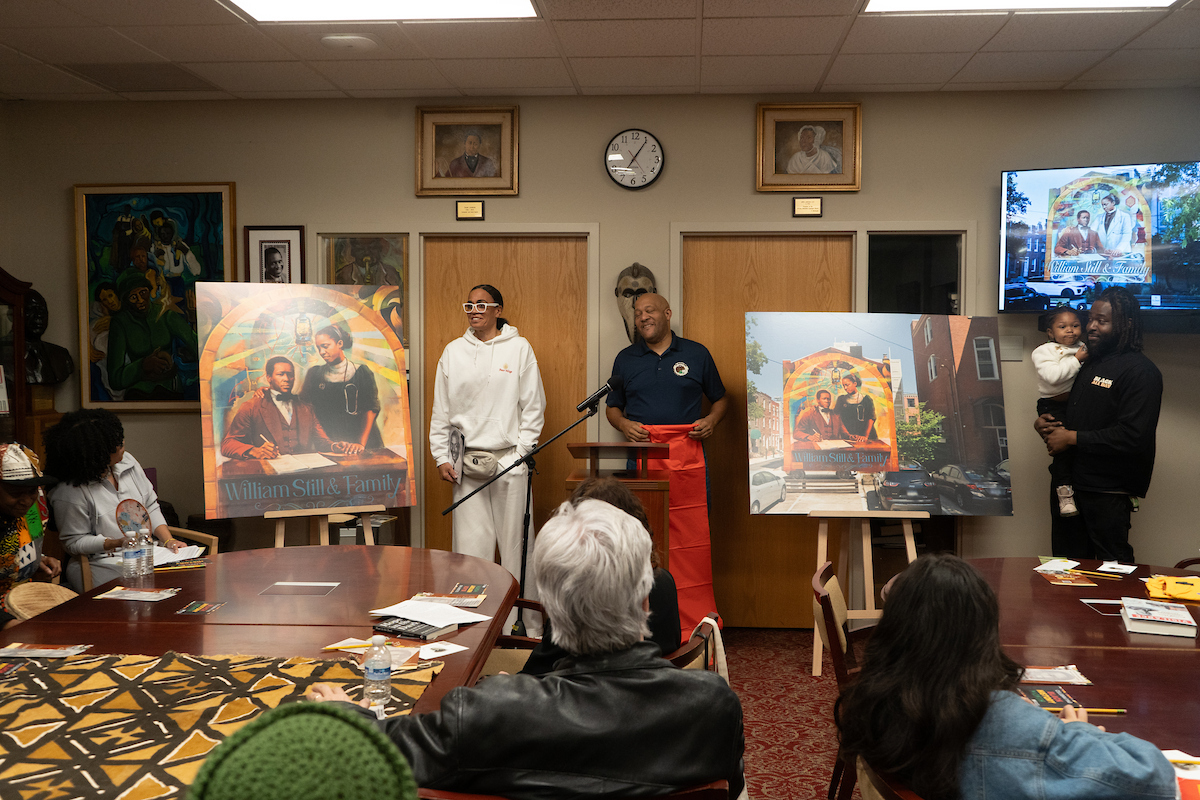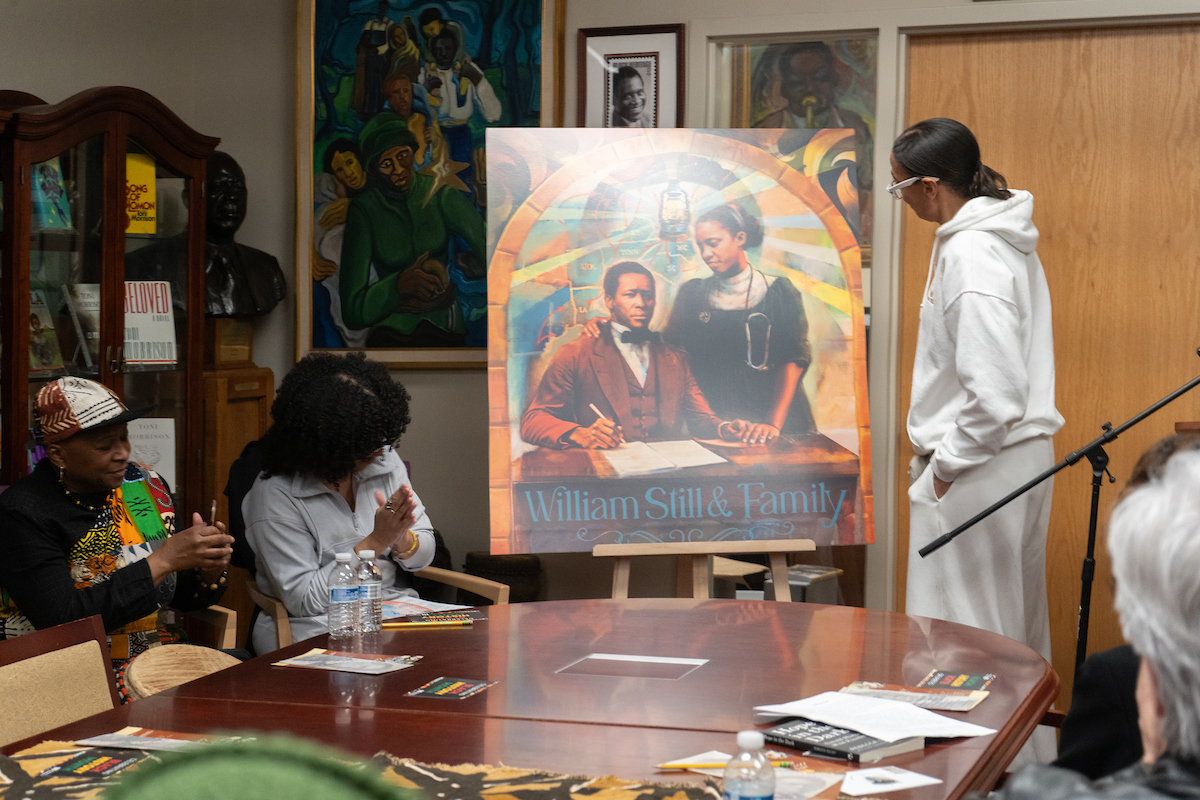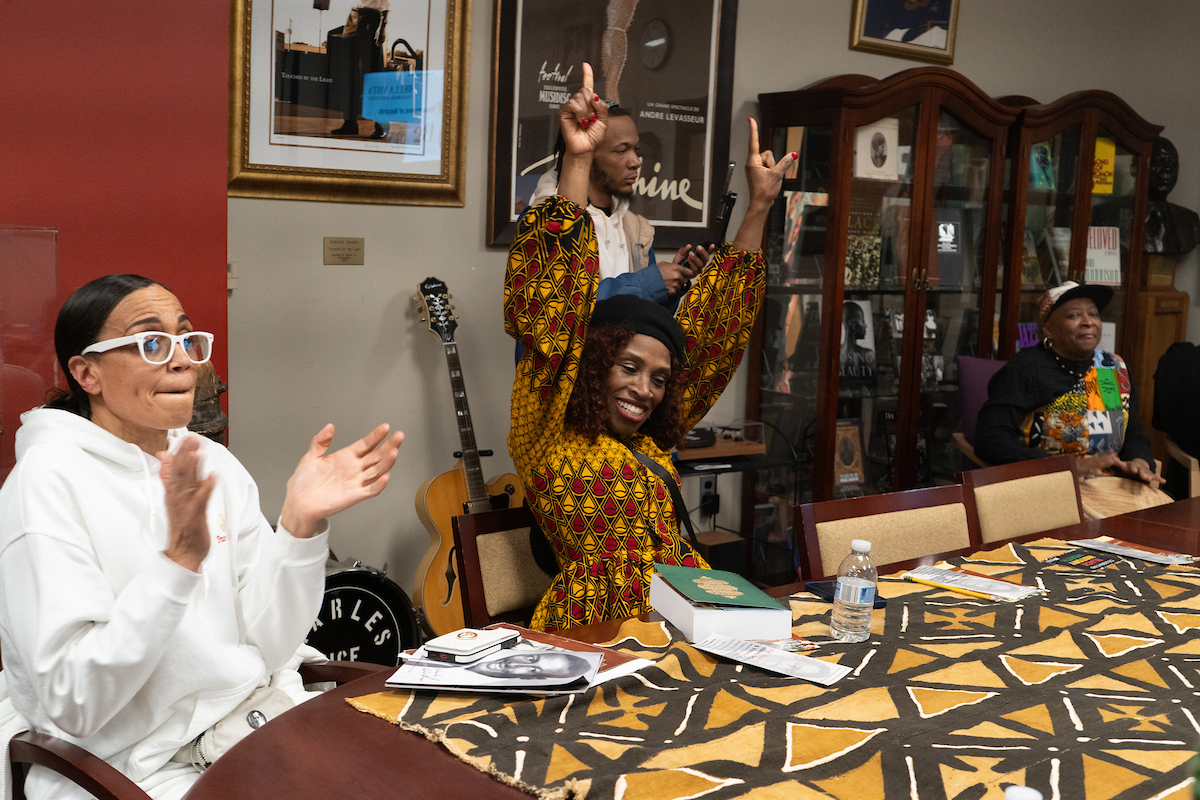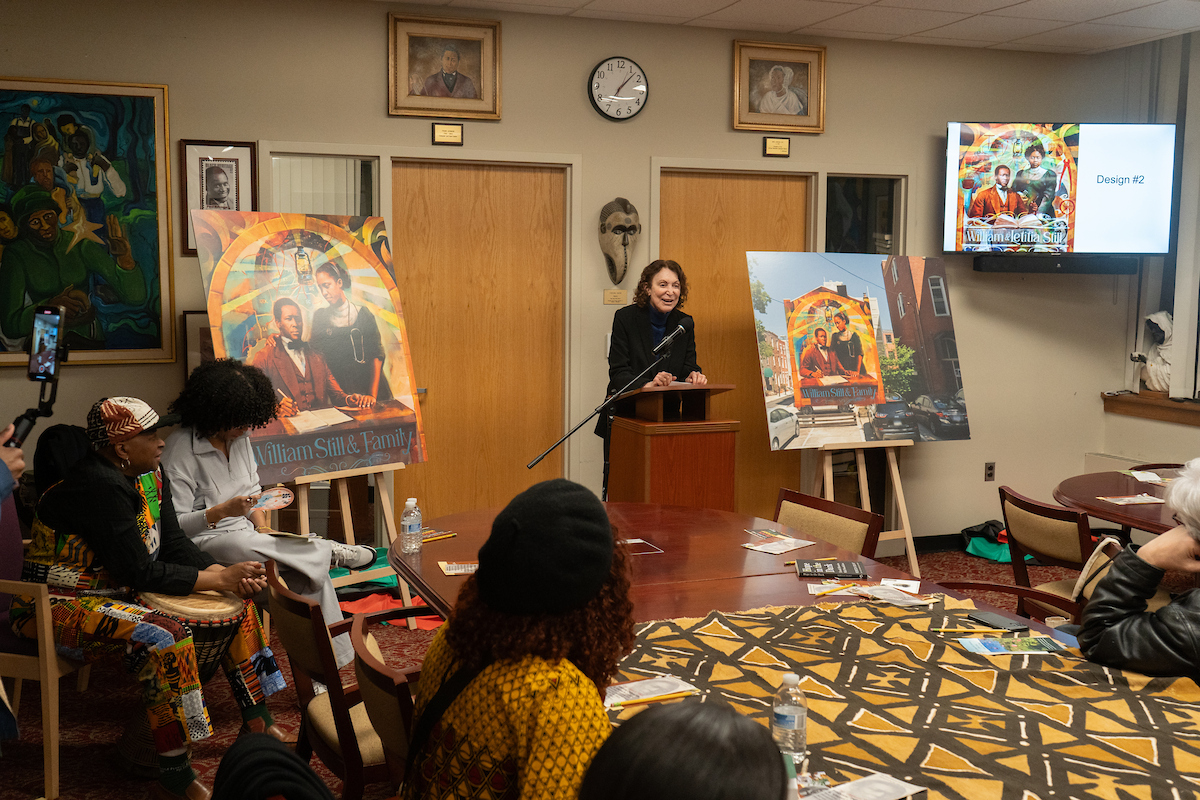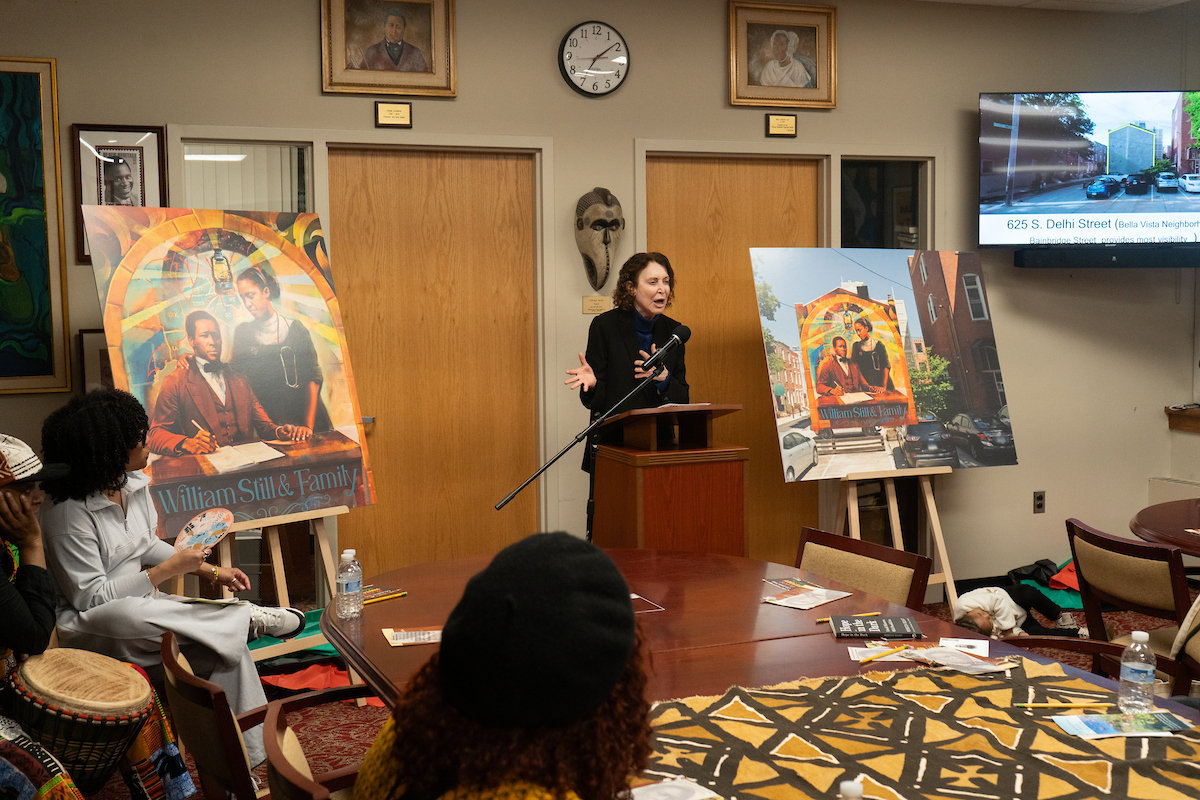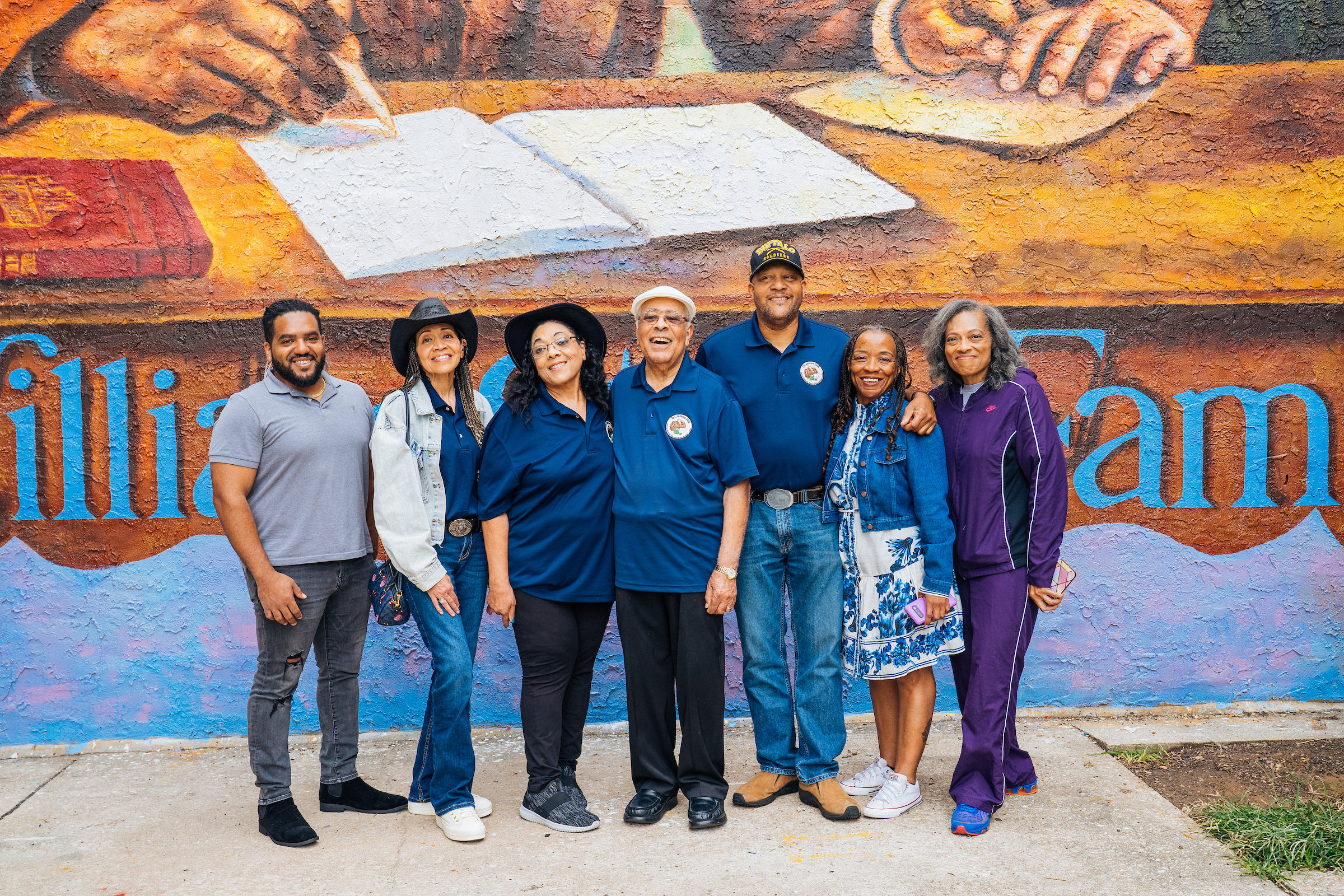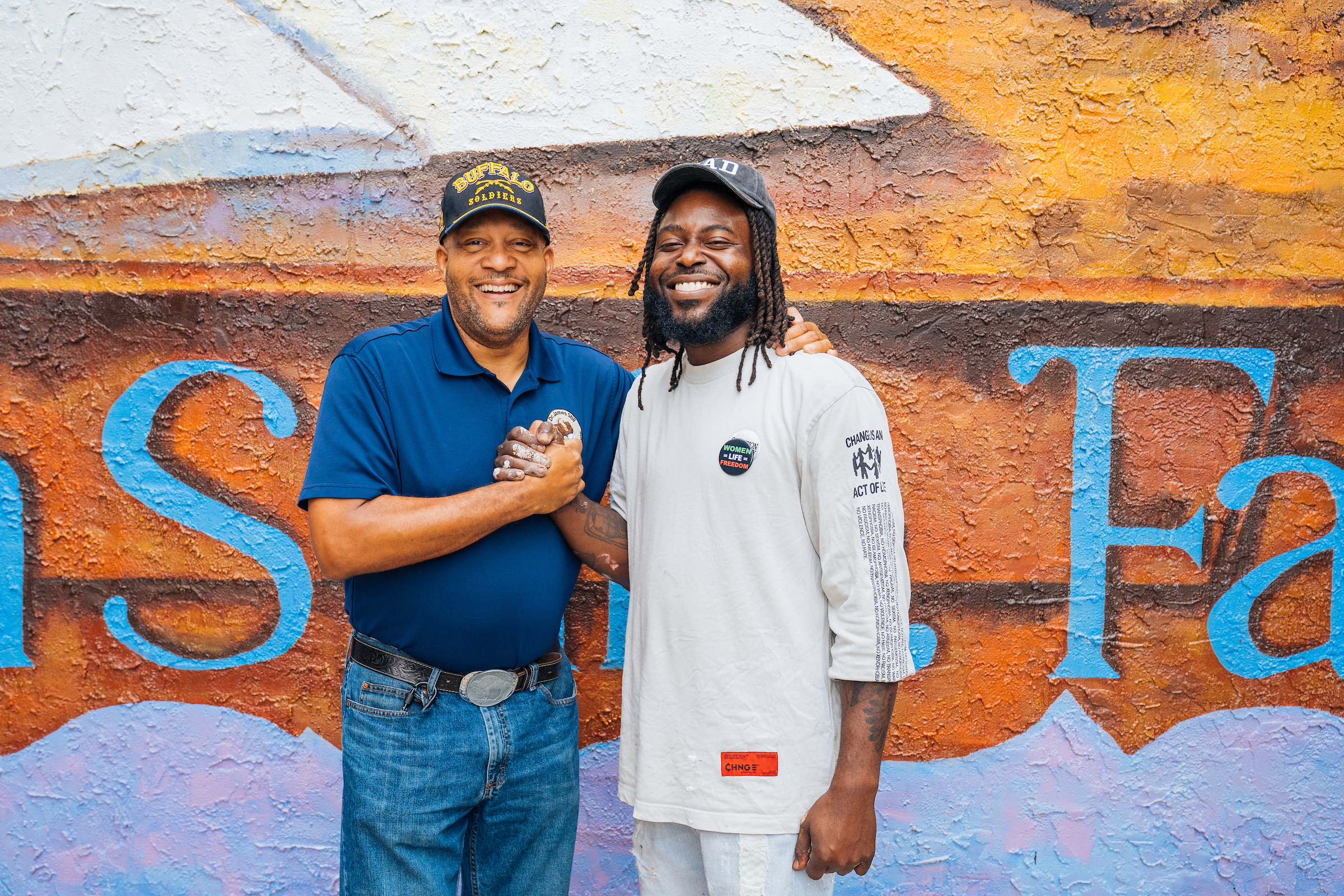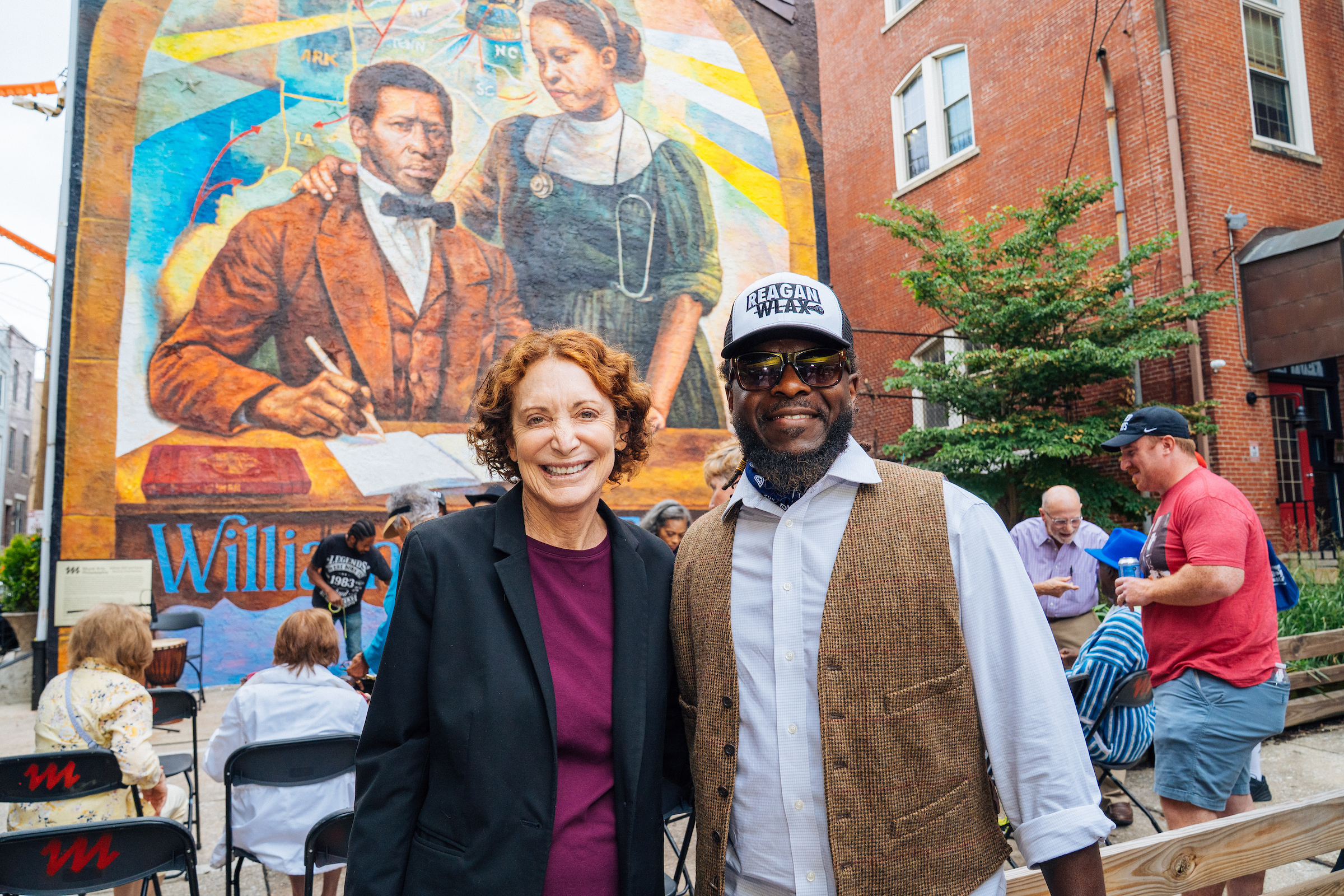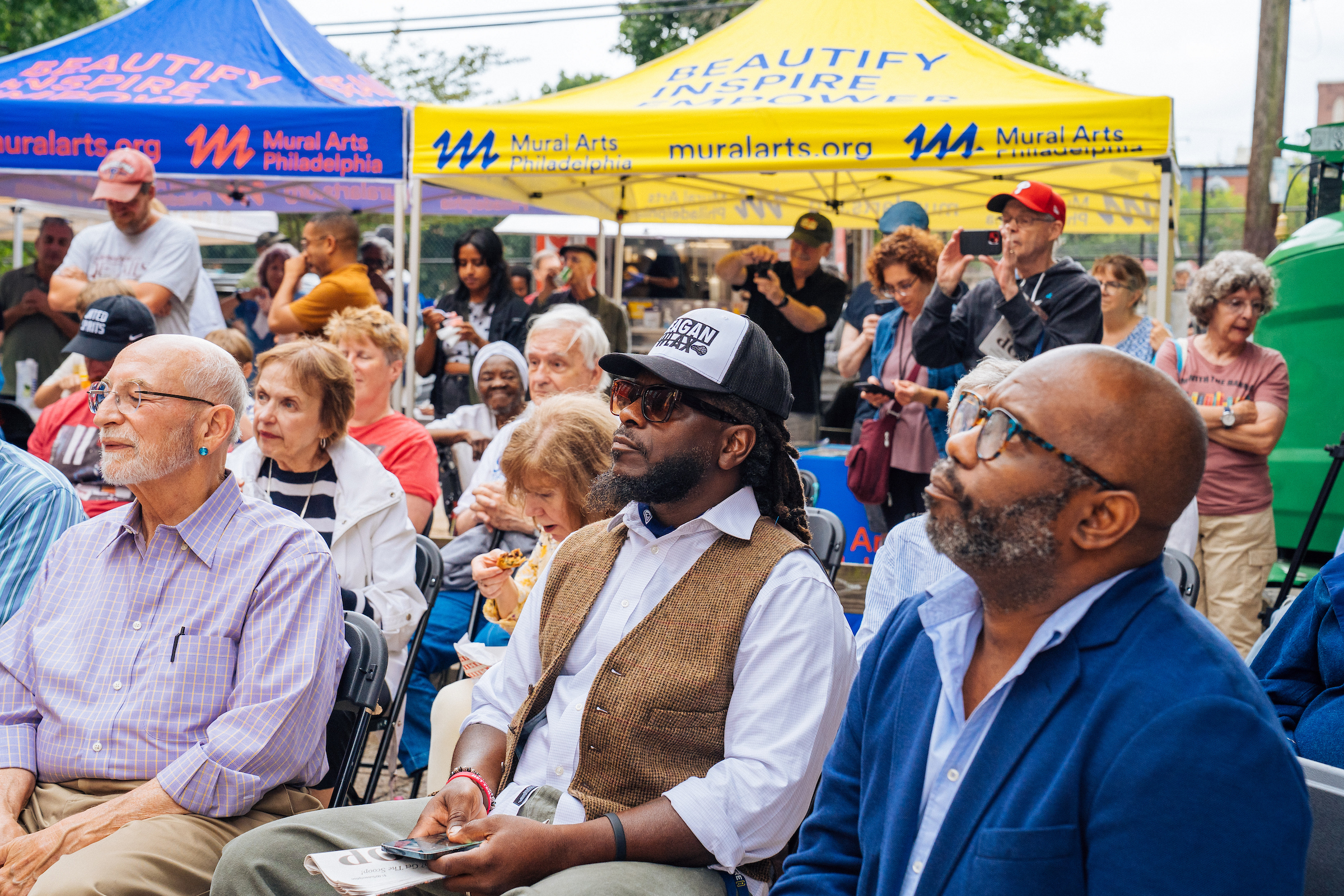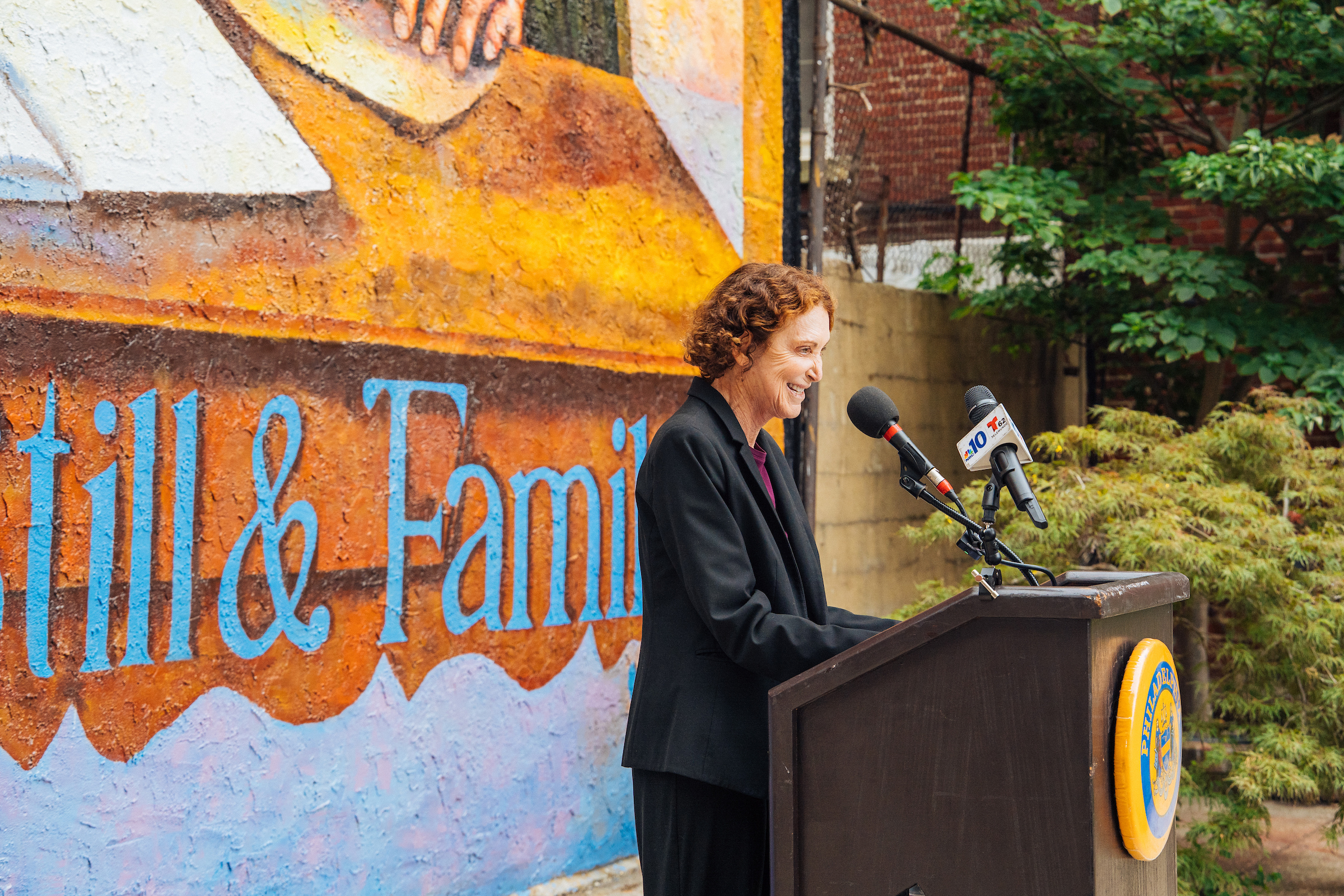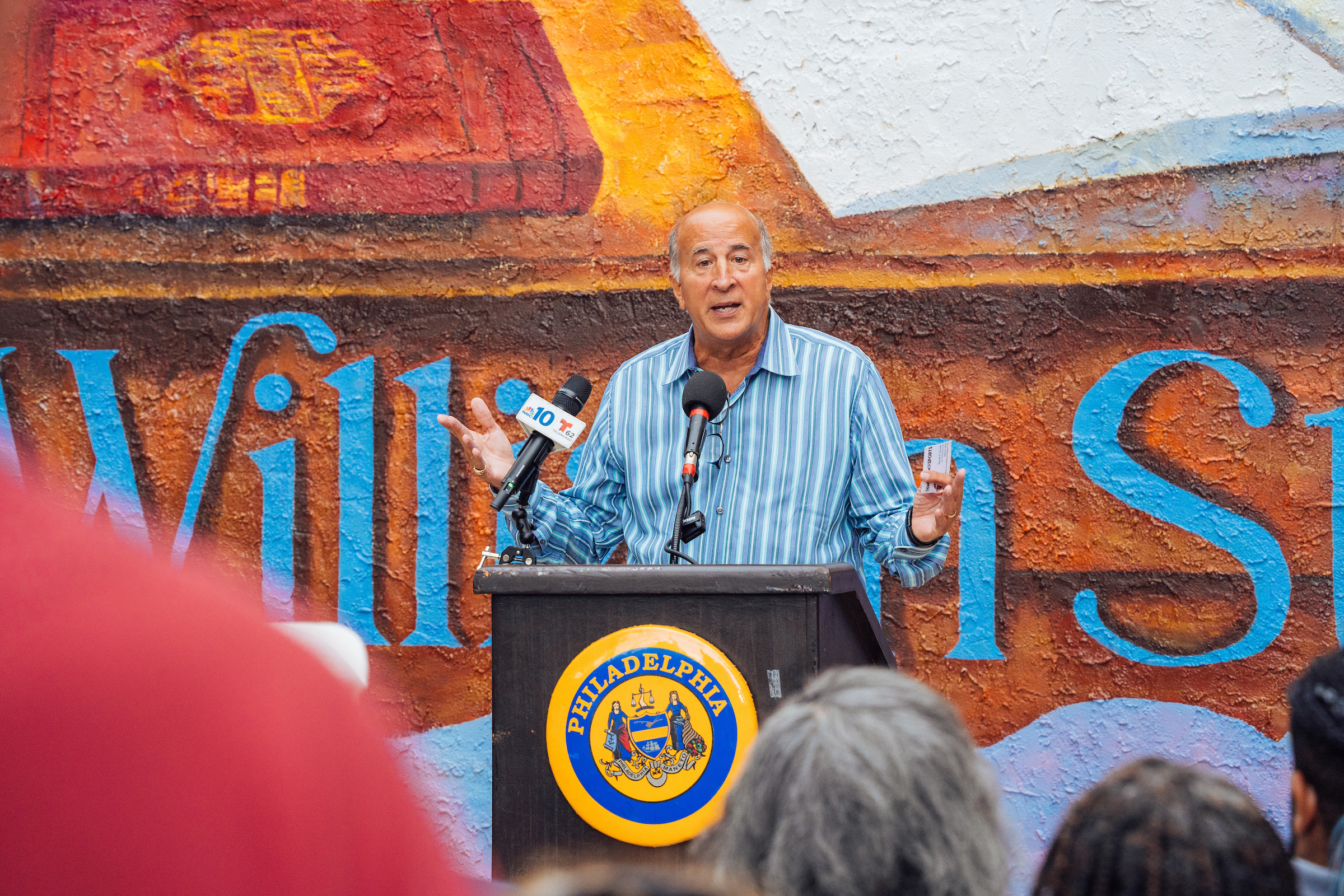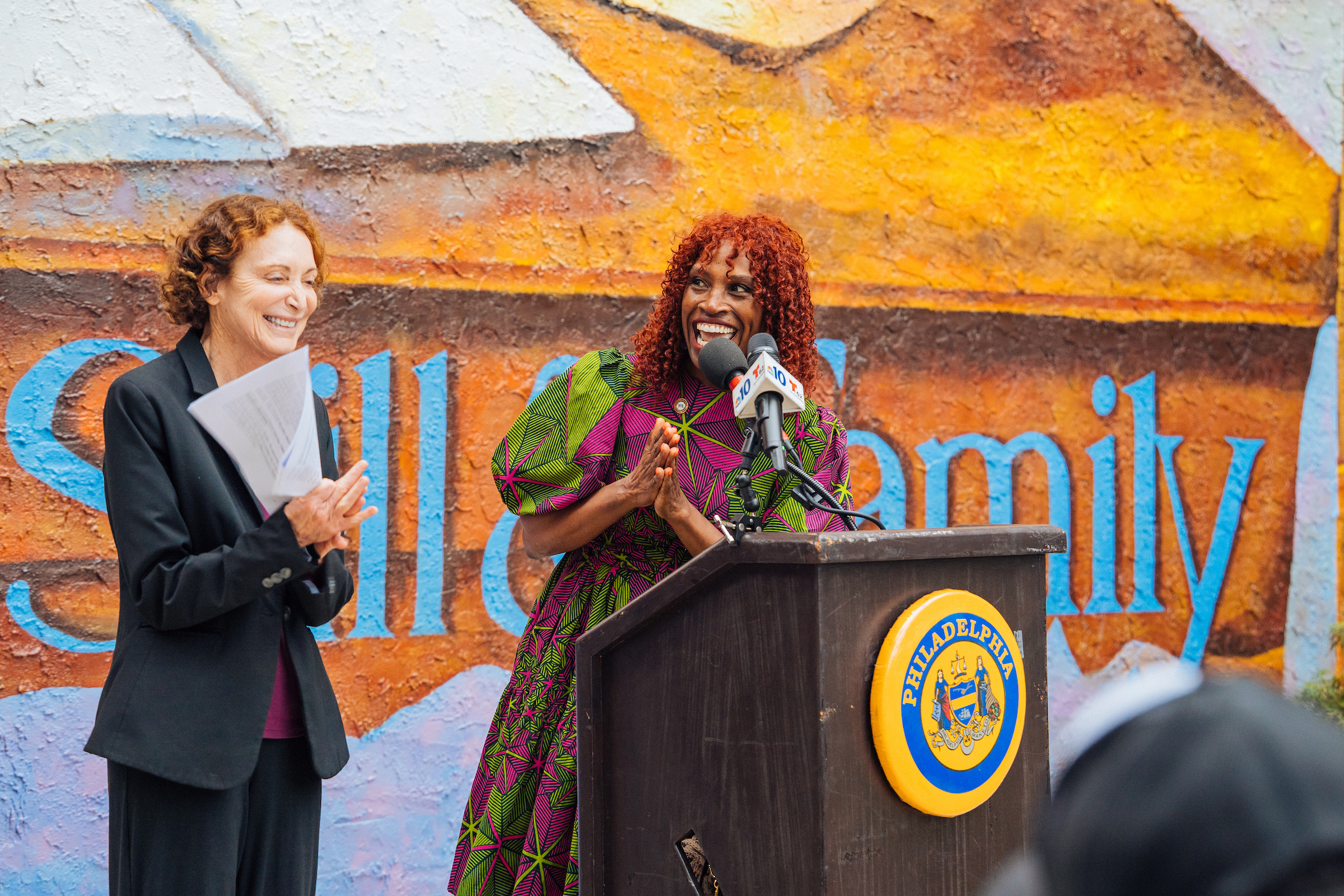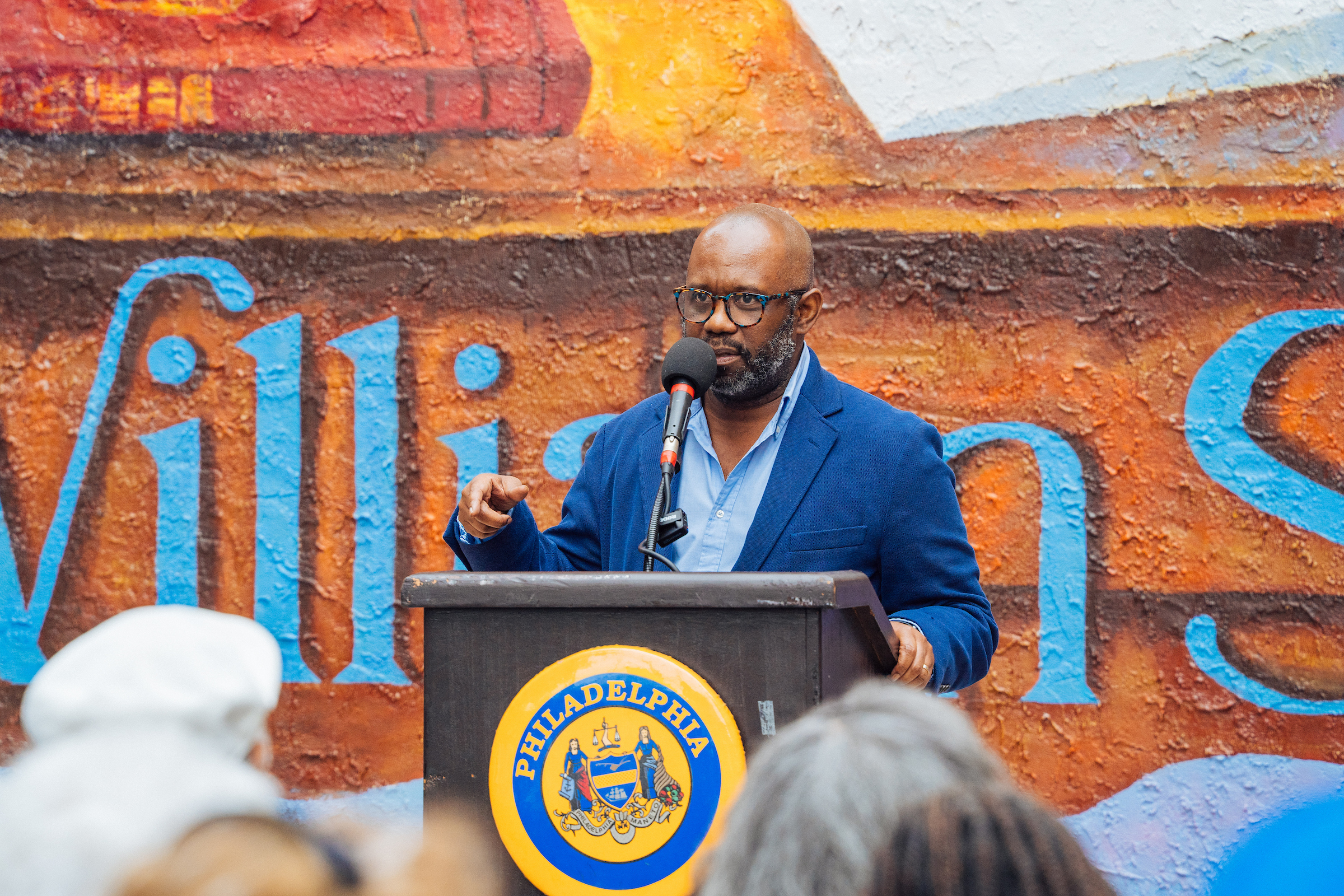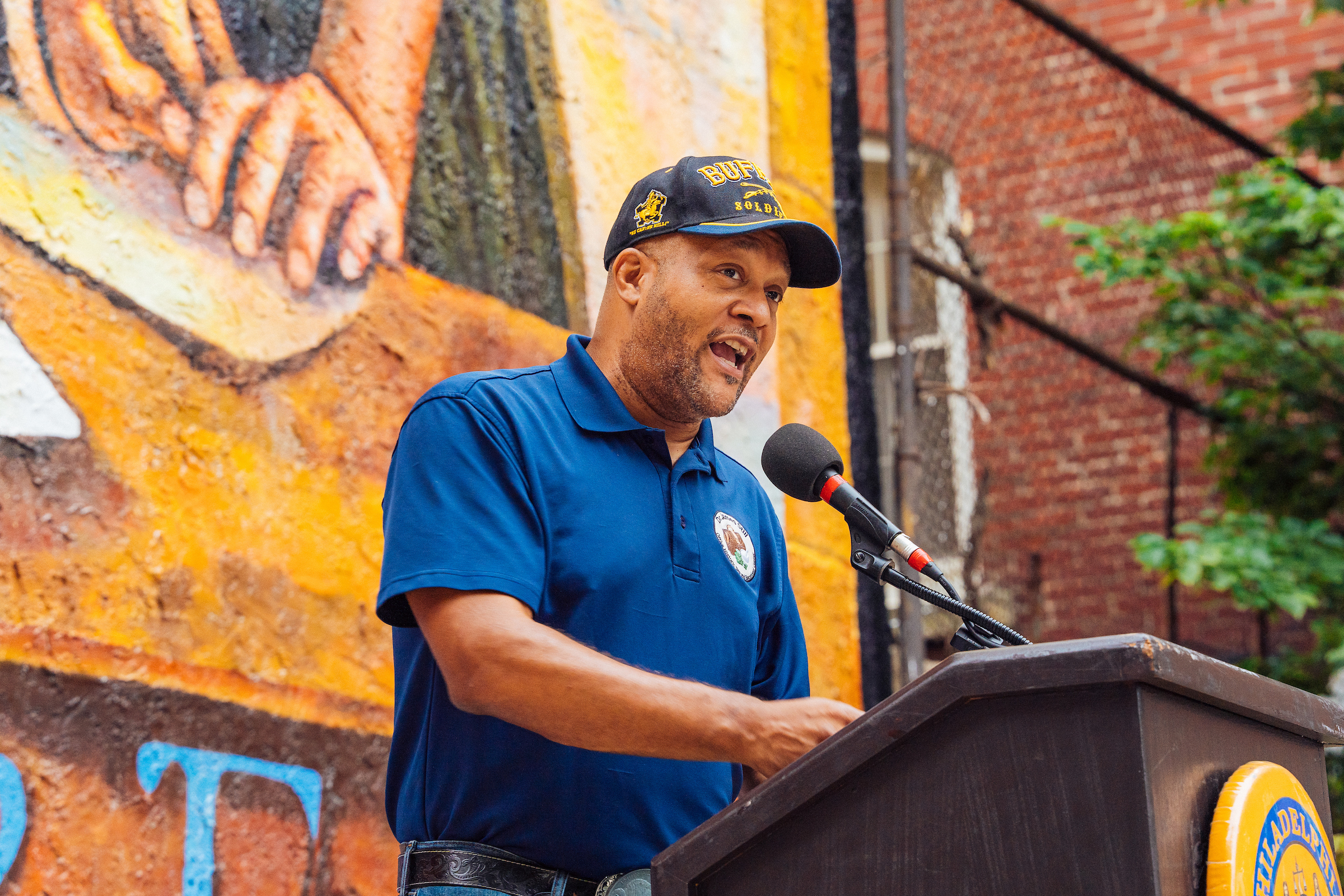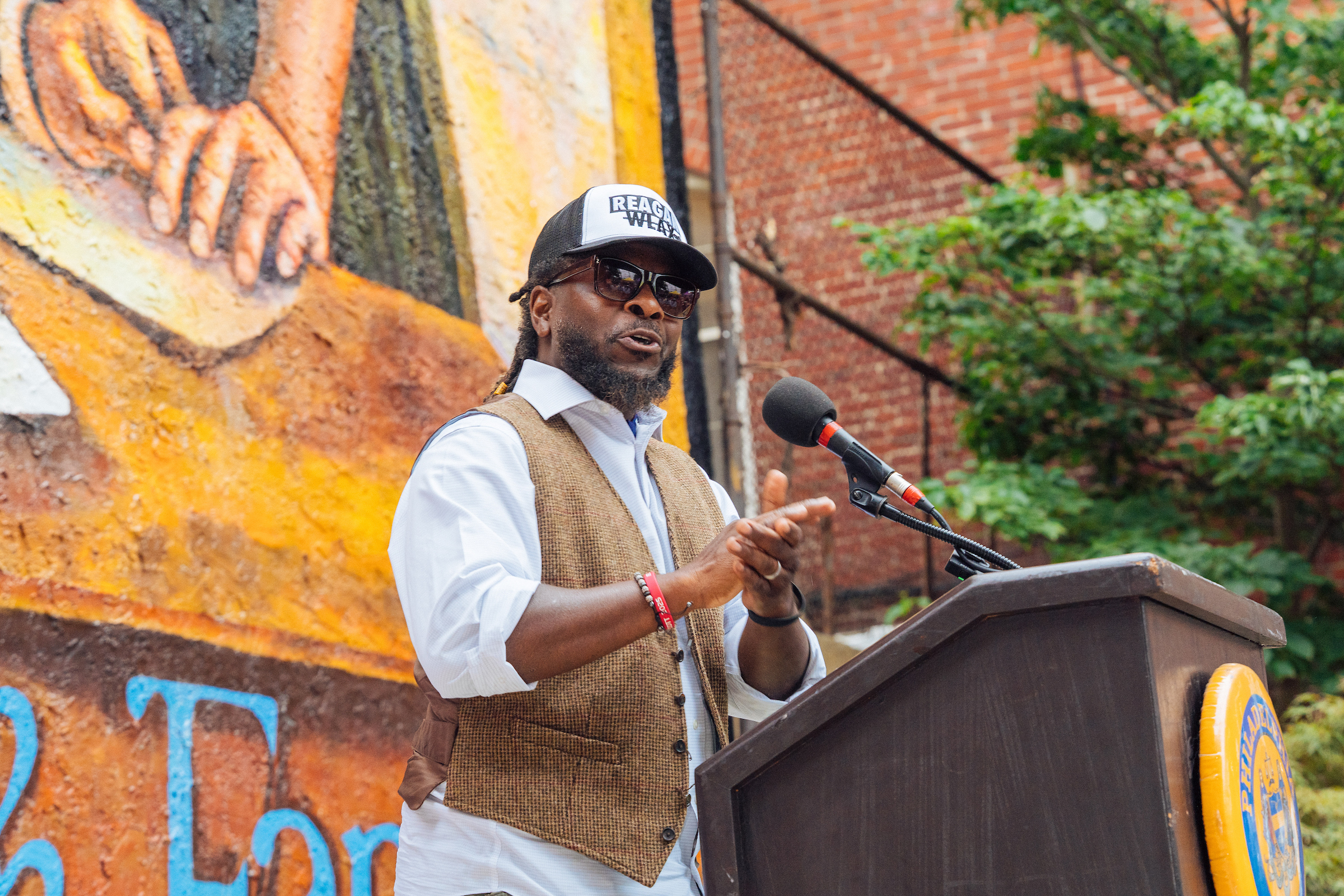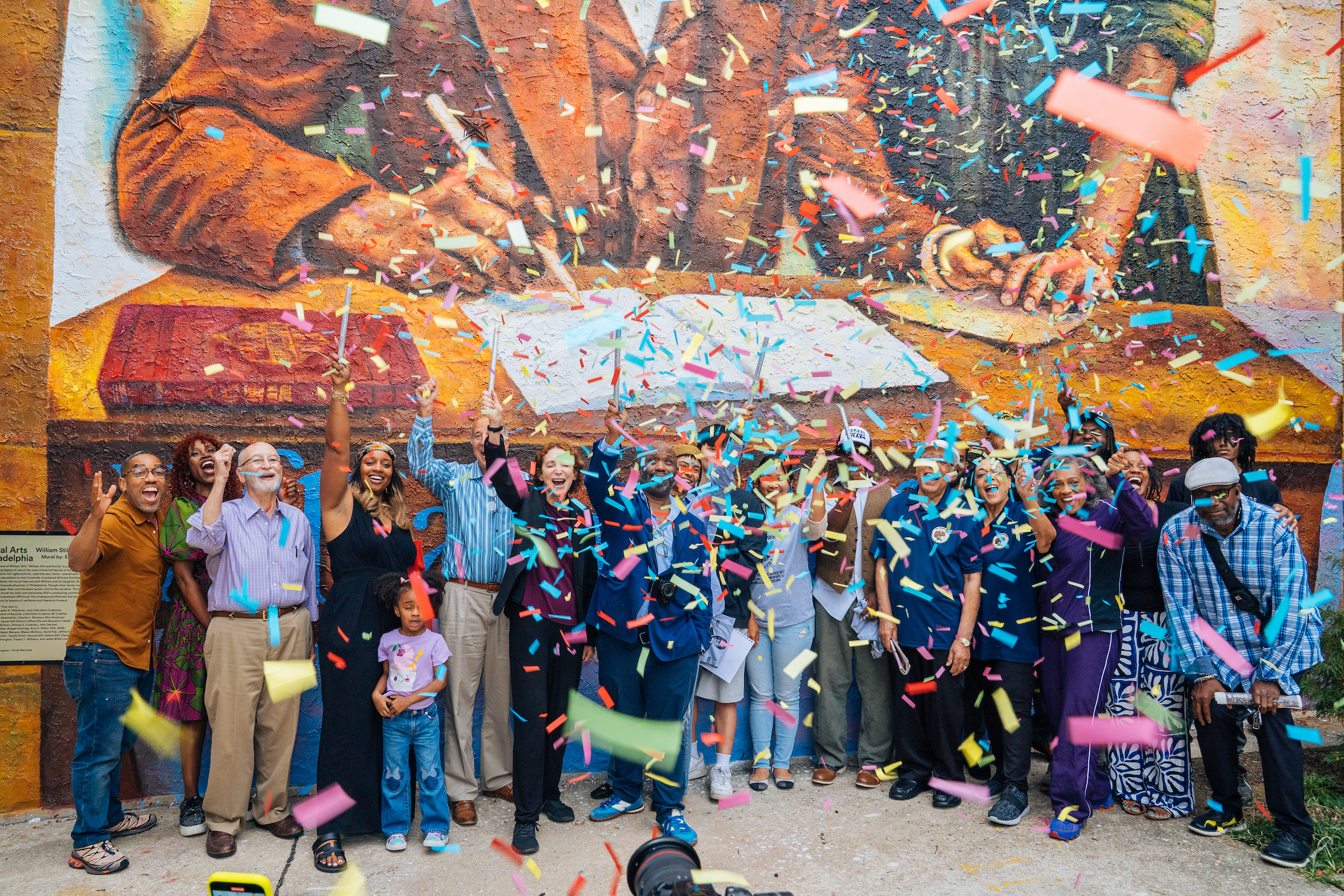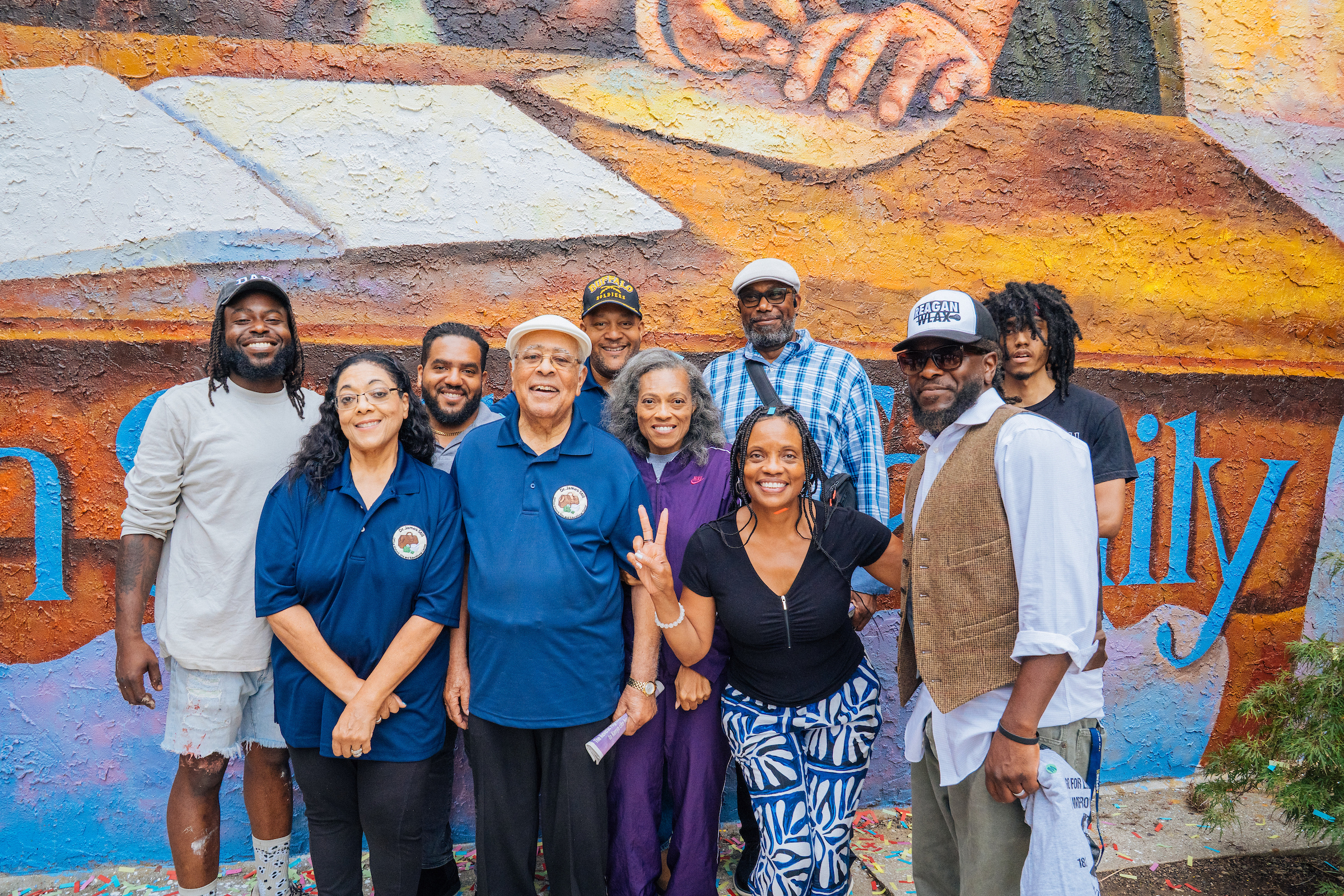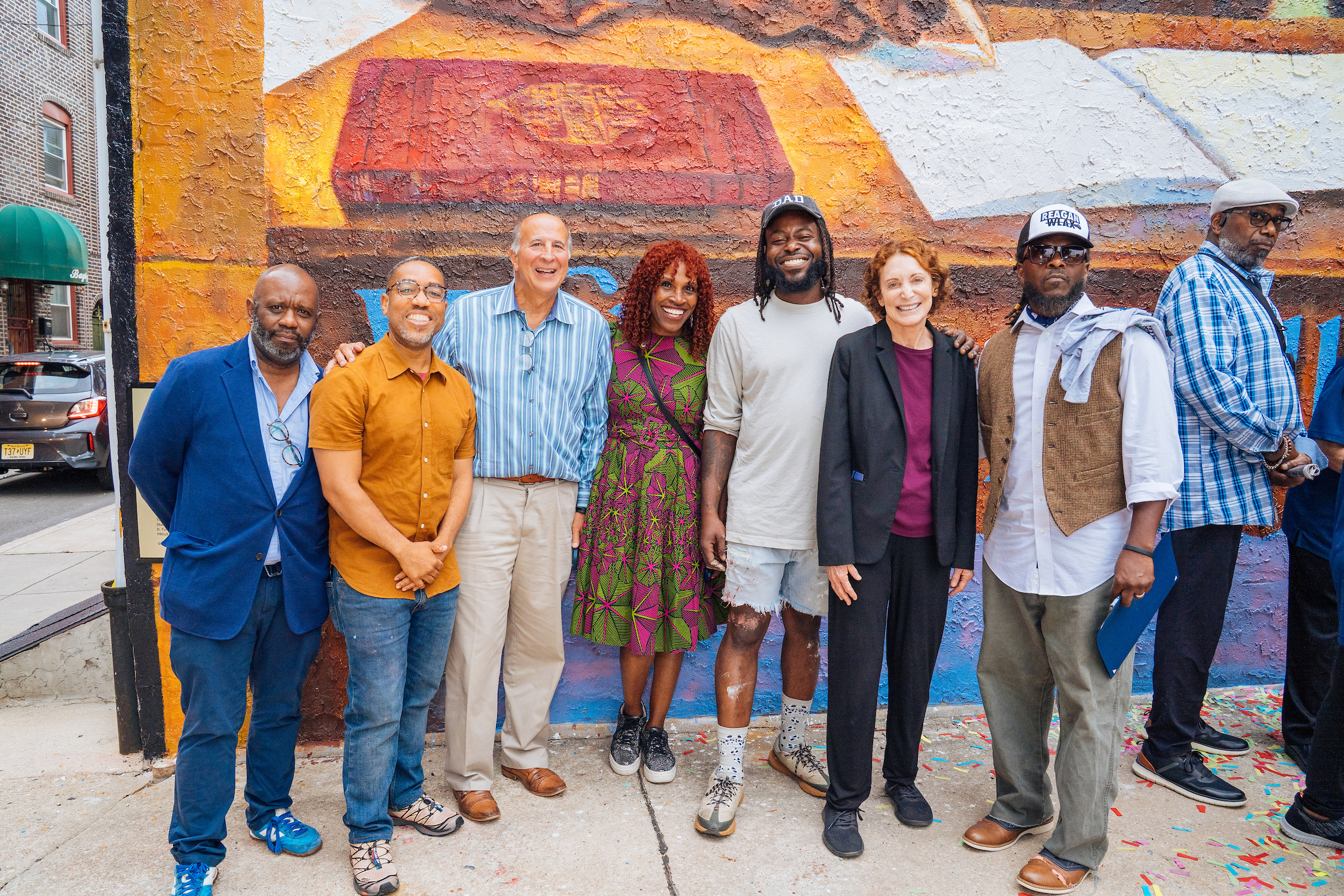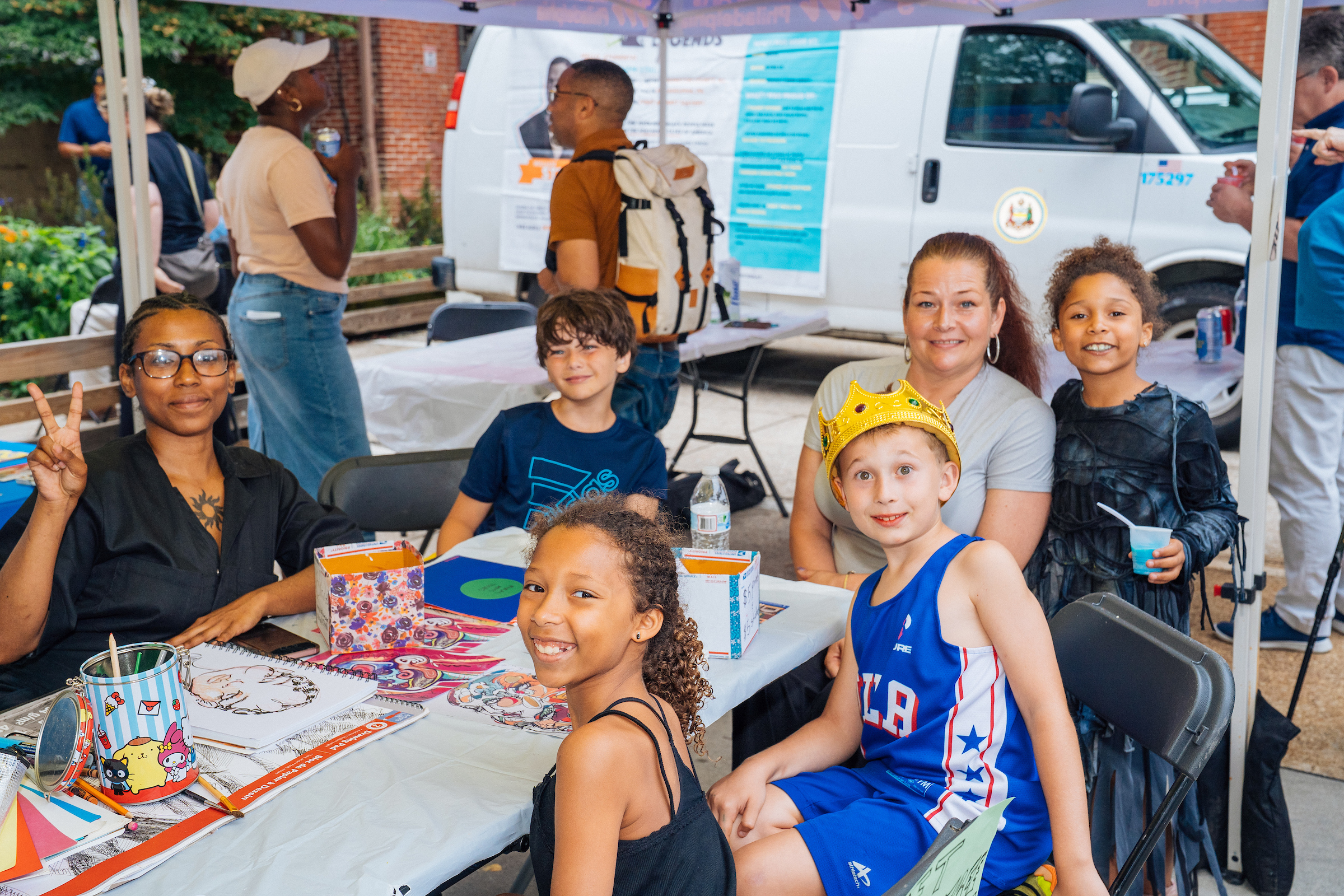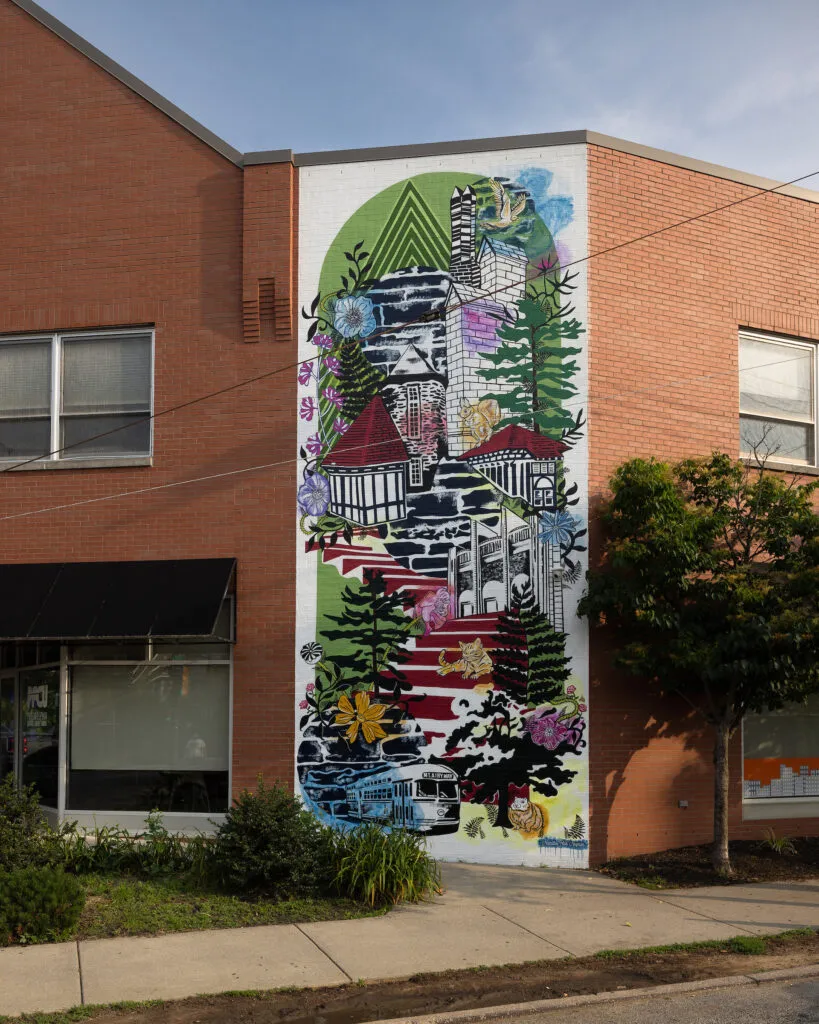William Still and Family
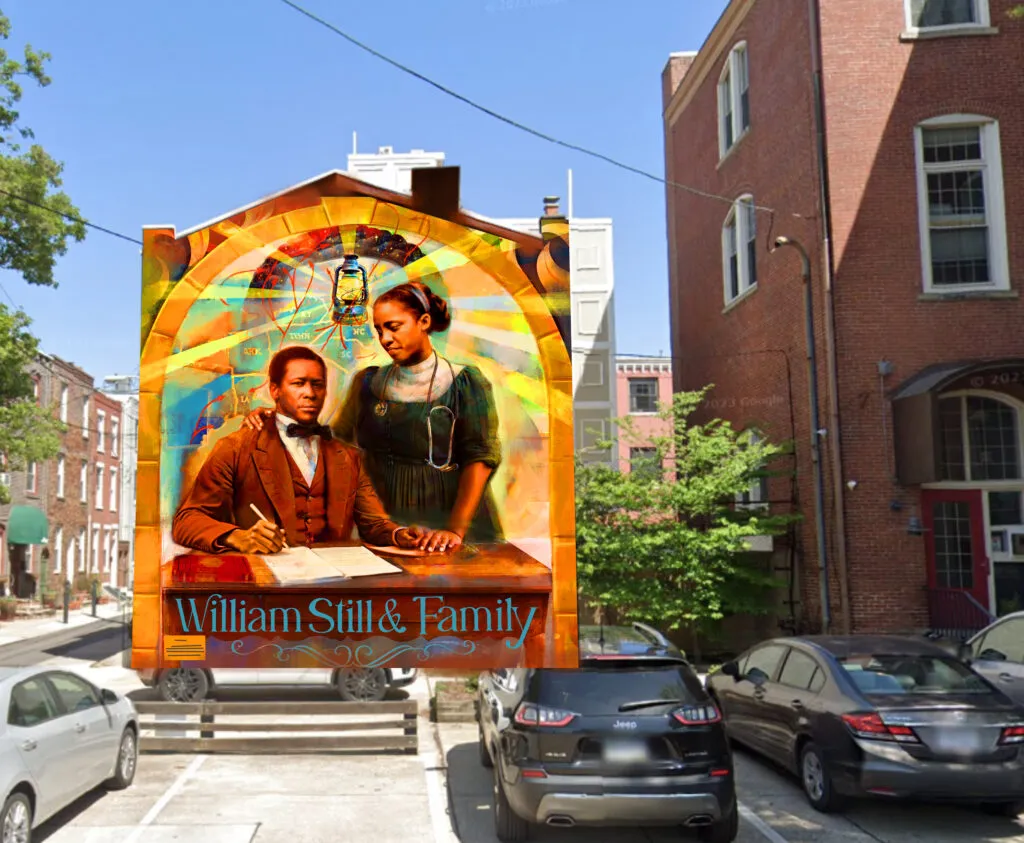
Painted on the historic Philadelphia home of William Still, William Still and Family is a powerful mural by artist Ernel Martínez that honors the enduring legacy of one of the most influential figures of the Underground Railroad. Still, a prominent abolitionist, author, and civil rights activist, used this very home—shared with his wife Letitia and their children from 1850 to 1855—as a way station to help hundreds of enslaved Africans find freedom. Created in close collaboration with Still’s descendants, the mural features both William and his daughter, Dr. Caroline V. Still Anderson—the first African American licensed physician in Philadelphia. Though other family members are not pictured due to the lack of existing images, their contributions remain vital to the narrative. Through vivid storytelling and symbolic imagery, the mural not only commemorates Still’s unwavering commitment to justice and family reunification, as chronicled in his landmark 1872 book The Underground Railroad, but also invites the public to engage with this vital history and carry its lessons of resilience and liberation forward.
Read the article in the Broad Street Review.
Artist Statement by Ernel Martinez
This mural celebrates the enduring legacy of William Still, a courageous abolitionist and pivotal figure in the Underground Railroad. Painted directly on the wall of his historic Philadelphia home, the artwork honors Still’s profound contributions to documenting and facilitating the escape of hundreds of African Americans from slavery. Through vibrant imagery and symbolic storytelling, the mural reflects Still’s unwavering commitment to freedom, justice, and the preservation of history. Created in close collaboration with Still’s descendants, this piece serves as both a tribute to his life and a reminder of the resilience and collective strength of those who fought for liberation. By bringing this narrative to life in a public space, the mural invites the community to engage with this vital history and carry its lessons forward.
About the Artist
Ernel Martinez was born in the small country of Belize and raised in south central Los Angeles and Detroit. His introduction to art was through the underground world of graffiti. Martinez studied art at the Pratt Institute and obtained his BFA from Kutztown University. In 2004, he received his MFA from the University of Pennsylvania. Based out of the Philadelphia area, Martinez explores creative methods to give underserved communities the tools to tell their stories through art making. He uses their stories as a framework to produce artwork based in social practice that engages and builds dialogue, and believes that art enriches communities and is the path to “true” collaboration.
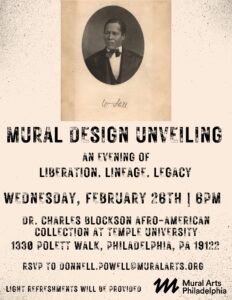 Statement from the Still Family
Statement from the Still Family
Many enslaved Africans passed through the doors of 625 Delhi Street and the nearby Vigilance Committee Office. This domicile once served as the residence of William Still, his wife Letitia, their daughter, Caroline Virginia, and their son, William Wilberforce. William and his family rented this home from 1850 to 1855. During William’s tenure here, the home operated as an Underground Railroad way station. William Still (1821-1902) was a prominent African American abolitionist, a successful businessman, entrepreneur, author, and civil rights activist.
Featured on the mural is William, and William and Letitia’s daughter, Dr. Caroline V. Still Anderson (1848-1919), who became the first African American licensed physician in Philadelphia. Family members not appearing on the mural include his wife, Letitia, and two sons, William Wilberforce and Robert George and daughter Frances Ellen. There are no known images of these family members.
The mural is titled “William Still and Family” primarily because William sought to reconnect people and their families. His book, “The Underground Railroad” (1872), documents the narratives of over 800 freedom seekers that passed through his Vigilance Committee office. His book continues to be an instrument of reconciliation for families whose ancestors traveled on the UGRR via William Still’s connections. Caroline wears a modern white physician’s coat, signifying her position in life, yet representing our connection to the past.
Visit the Charles L. Blockson Afro-American Collection, Historical Society of Pennsylvania, and the Dr. James Still Historic Office Site in Medford, New Jersey, to discover more about this phenomenal man and his Still family.
Read this story in the South Jersey News.
William Still and Family: A Legacy of Family Faith, and Freedom
by Valarie Still
Children are the legacy of their parents, the legacy of a family. William Still is the legacy of his parents Levin and Charity who escaped from the Eastern Shore of Maryland to New Jersey at the turn of the 19th century. Born on October 7, 1821, William was the youngest of 18 children. He was their dream of what freedom meant.
In 1844, William Still make Philadelphia his home. Shortly after arriving in Philadelphia, he married Letitia George. Although the Underground Railroad existed before Still’s birth, by the time of his death on July 14, 1902, he was nationally known as “The Father of the Underground Railroad.”
William Still was the preeminent strategist and organizer of the Underground Railroad, a clandestine system of freedom that changed the trajectory of America. He was a fearless, non-conformist, untraditional, revolutionary social justice and civil and human rights leader who fought against racial and gender discrimination. Still was also a successful business owner. He and his wife Letitia were a 19th century power couple in Philadelphia while raising four surviving children. William Still, who organized boycotts, petitioned politicians and fought against discrimination on Philadelphia streetcars preceded Dr. Martin Luther King, Jr. as a civil rights leader and activists. Letitia, a dressmaker, managed their boarding houses.
William and Letitia’s family represents the true essence and importance of family. Their children carried on their legacy. His eldest daughter Dr. Caroline Virginia Wiley Anderson (depicted in the mural) became one of the first black female doctors in the USA in 1878. Along with her father and husband, Caroline was fundamental in the creation of numerous public services for the community including the Berean Presbyterian Church, the Berean Manual Training and Industrial Institute (which still exists on S. Church Street), the Berean Savings and Loans Association, Berean Public Kindergarten, Berean Medical Dispensary, all while raising a family. She was a 19th century working mom. Still’s eldest son William Wilberforce graduated from Lincoln University in 1874 and became an attorney. His daughter Frances Ellen graduated from Oberlin College in 1878 and became a teacher. His youngest son Robert George graduated from Lincoln University in 1883 and became the first African American candidate for City Council for the Democratic Party in Philadelphia.
As an advocate for education and knowledge, William Still documented his experiences and preserved those histories which included journals and letters. In 1872 he published the over 800-page official history of the Underground Railroad based on records he kept as the secretary of the Pennsylvania Anti-Slavery Society before the Civil War. A collection of Dr. Caroline Still Anderson’s private letters between William Still and his family at the Charles L. Blockson Afro American Collection at Temple University reveals their endearing relationship. The letters offer an unknown aspect of William Still and the plight of the 19th century African American family as it transitioned from enslaved to full American citizenship, yet still marginalized and disenfranchised.
William Still and Family, A Legacy of Family, Faith and Freedom represents a different type of generational wealth. This generational wealth is empowering, liberating and unlimited. The source of that wealth is knowledge, strong familial bonds and knowing oneself as pure, positive, powerful unlimited energy. Superstars. This proud Philadelphian family not only survived but thrived through the darkest periods for African Americans – slavery, civil war, reconstruction and nadir. They were and remain superstars for future generations, lighting up the darkest places, shining light on who we can be…
William Still (October 7, 1821 – July 14, 1902)
Letitia George Still (January 10, 1821 – January 14, 1908)
Dr. Caroline Virginia Still Wiley Anderson (November 1, 1848 – June 2, 1919)
William Wilberforce Still (February 26, 1854 – September 1, 1932)
Frances Ellen Still (September 15, 1859 – December 15, 1943)
Letitia Still (born in summer 1860 – October 11,1861)
Still Born (April 15, 1863)
Robert George Still (1865 – January 8, 1896)
RECENT PRESS
Fox 29: South Philly honors abolitionist William Still and his family with new mural
The Philadelphia Tribune: New Philadelphia mural honors William Still, key figure of the Underground Railroad
Philly Voice: Mural in Bella Vista honors William Still, the father of the Underground Railroad, and his prominent family
FUNDERS
Leslie Fleischner and Little Giant Creative
PARTNERS
City of Philadelphia Department of Records, BE Creative Marketing Studio, Bella Vista Neighbors Association, Charles L. Blockson Afro-American Collection, Little Giant Creative, and Dr. James Still Historic Office Site in Medford, New Jersey
SPECIAL THANKS
Aslaku Berhanu, John Delrossi, Marci Green, Britney Elayne, Dennis Hallda, Abigail Hastings, Amy Hillier, PhD, MSW, Ralph Marano, Jeffrey Shablin, Tayyib Smith, Samuel Still, Valarie Still, Dr. Diane D. Turner, Tracey T. Williams
